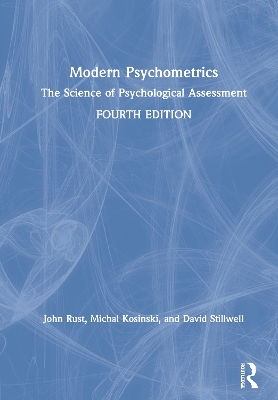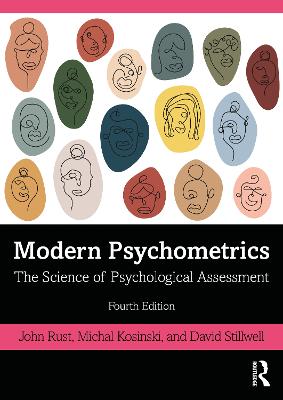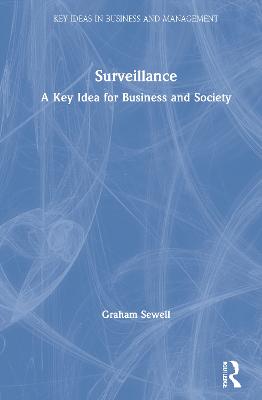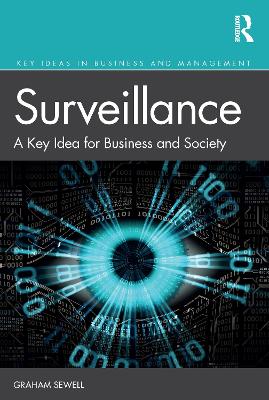Modern Psychometrics
 -10%
portes grátis
-10%
portes grátis
Modern Psychometrics
The Science of Psychological Assessment
Rust, John; Stillwell, David; Kosinski, Michal
Taylor & Francis Ltd
12/2020
180
Dura
Inglês
9781138638631
15 a 20 dias
453
Descrição não disponível.
1. The history and evolution of psychometric testing
Introduction
What is psychometrics?
Psychometrics in the 21st century
History of assessment
Chinese origins
The ability to learn
The nineteenth century
Beginnings of psychometrics as a science
Intelligence testing
Eugenics and the dark decades
Psychometric testing of ability
The dark ages come to an end
An abundance of abilities
Tests of other psychological constructs
Personality
Integrity
Interests
Motivation
Values
Temperament
Attitude
Belief
Summary
2. Constructing your own psychometric questionnaire
The purpose of the questionnaire
Making a blueprint
Writing items
Alternate-choice items
Multiple-choice items
Rating-scale items
All questionnaires
Knowledge-based questionnaires
Person-based questionnaires
Designing the questionnaire
Piloting the questionnaire
Item analysis
Facility
Discrimination
Distractors
Obtaining the reliability
Cronbach's alpha
Split-half reliability
Assessing validity
Face validity
Content validity
Standardization
3. The Psychometric principles
Reliability
Test-retest reliability
Parallel-forms reliability
Split-half reliability
Interrater reliability
Internal consistency
The standard error of measurement (SEM)
Comparing test reliabilities
Restriction of range
Validity
Face validity
Content validity
Predictive validity
Concurrent validity
Construct validity
Differential validity
Standardization
Norm referencing
Criterion referencing
Equivalence
Differential item functioning
Measurement invariance
Adverse impact
Summary
4. Psychometric measurement
True-score theory
Identification of latent traits with factor analysis
Spearman's two-factor theory
Vector algebra and factor rotation
Moving into more dimensions
Multidimensional scaling
Application of factor analysis to test construction
Eigenvalues
Identifying the number of factors to extract using the Kaiser criterion
Identifying the number of factors to extract using the Cattell scree test
Other techniques for identifying the number of factors to extract
Factor rotation
Rotation to simple structure
Orthogonal rotation
Oblique rotation
Limitations of the classical factor-analystic approach
Criticisms of psychometric measurement theory
The Platonic true score
Psychological vs. physical true scores
Functional assessment and competency testing
Machine learning and the black box
Summary
5. Item response theory and computer adaptive testing
Introduction
Item banks
The Rasch model
Assessment of educational standards
The Birnbaum model
The evolution of modern psychometrics
Computer adaptive testing
Item equating
Polytomous IRT
An intuitive graphical description of item tesponse theory
Limitations of classical test theory
A graphical Introduction to item response theory
The logistic curve
3PL-model: difficulty parameter
3PL model: discrimination parameter
3PL model: guessing parameter
The Fisher information function
The test information function and its relationship to the standard error of measurement
How to score an IRT test
Principles of computer adaptive testing
Summary of item response theory
Confirmatory factor analysis
6. Personality theory
Theories of personality
Psychoanalytic theory
Humanistic theory
Social learning theory
Behavioral genetics
Type and trait theories
Different approaches to personality assessment
Self-report techniques and personality profiles
Reports by others
Online digital footprints
Situational assessments
Projective measures
Observations of behavior
Task performance methods
Polygraph methods
Repertory grids
Sources and management of bias
Self-report techniques and personality profiles
Reports by others
Online digital footprints
Situational assessments
Projective measures
Observations of behavior
Task performance methods
Polygraph methods
Repertory grids
Informal methods of personality assessment
State versus trait measures
Ipsative scaling
Spurious validity and the Barnum Effect
Summary
7. Personality assessment in the workplace
Prediction of successful employment outcomes
Validation of personality questionnaires previously used in employment
Historical antecedents to the five-factor model
Stability of the five-factor model
Cross-cultural aspects of the five-factor model
Scale independence and the role of facets
Challenges to scale construction for the five-factor model
Impression management
Acquiescence
Response bias and factor structure
Development of the five OBPI personality scales
Assessing counterproductive behavior at work
The impact of behaviorism
Prepsychological theories of integrity
Modern integrity testing
Psychiatry and the medical model
The dysfunctional tendencies
The dark triad
Assessing integrity at work
The OBPI integrity scales
Conclusion
8. Employing digital footprints in psychometrics
Introduction
Types of digital footprint
Usage logs
Language data
Mobile sensors
Images and audiovisual data
Typical applications of digital footprints in psychometrics
Replacing and complimenting traditional measures
New contexts and new constructs
Predicting future behavior
Studying human behavior
Supporting the development of traditional measures
Advantages and challenges of employing digital footprints in psychometrics
High ecological validity
Greater detail and longitude
Less control over the assessment environment
Greater speed and unobtrusiveness
Less privacy and control
No anonymity
Bias
Enrichment of existing constructs
Developing digital-footprint-based psychometric measures
Collecting digital footprints
How much data is needed?
Preparing digital footprints for analysis
Respondent-footprint matrix
Data sparsity
Reducing the dimensionality of the respondent-footprint matrix
Singular value decomposition
Latent Dirichlet allocation
Building prediction models
9. Psychometrics in the era of the intelligent machine
History of computerization in psychometrics
Computerized statistics
Computerized item banks
Computerized item generation
Automated advice and report systems
The evolution of AI in psychometrics
Expert systems
Neural networks (machine learning)
Parallel processing
Predicting with statistics and machine learning
Explainability
Psychometrics in cyberspace
What and where is cyberspace?
The medium is the message
Moral development in AI
Kohlberg's theory of moral development
Do machines have morals?
The laws of robotics
Artificial general intelligence
Conclusion
Introduction
What is psychometrics?
Psychometrics in the 21st century
History of assessment
Chinese origins
The ability to learn
The nineteenth century
Beginnings of psychometrics as a science
Intelligence testing
Eugenics and the dark decades
Psychometric testing of ability
The dark ages come to an end
An abundance of abilities
Tests of other psychological constructs
Personality
Integrity
Interests
Motivation
Values
Temperament
Attitude
Belief
Summary
2. Constructing your own psychometric questionnaire
The purpose of the questionnaire
Making a blueprint
Writing items
Alternate-choice items
Multiple-choice items
Rating-scale items
All questionnaires
Knowledge-based questionnaires
Person-based questionnaires
Designing the questionnaire
Piloting the questionnaire
Item analysis
Facility
Discrimination
Distractors
Obtaining the reliability
Cronbach's alpha
Split-half reliability
Assessing validity
Face validity
Content validity
Standardization
3. The Psychometric principles
Reliability
Test-retest reliability
Parallel-forms reliability
Split-half reliability
Interrater reliability
Internal consistency
The standard error of measurement (SEM)
Comparing test reliabilities
Restriction of range
Validity
Face validity
Content validity
Predictive validity
Concurrent validity
Construct validity
Differential validity
Standardization
Norm referencing
Criterion referencing
Equivalence
Differential item functioning
Measurement invariance
Adverse impact
Summary
4. Psychometric measurement
True-score theory
Identification of latent traits with factor analysis
Spearman's two-factor theory
Vector algebra and factor rotation
Moving into more dimensions
Multidimensional scaling
Application of factor analysis to test construction
Eigenvalues
Identifying the number of factors to extract using the Kaiser criterion
Identifying the number of factors to extract using the Cattell scree test
Other techniques for identifying the number of factors to extract
Factor rotation
Rotation to simple structure
Orthogonal rotation
Oblique rotation
Limitations of the classical factor-analystic approach
Criticisms of psychometric measurement theory
The Platonic true score
Psychological vs. physical true scores
Functional assessment and competency testing
Machine learning and the black box
Summary
5. Item response theory and computer adaptive testing
Introduction
Item banks
The Rasch model
Assessment of educational standards
The Birnbaum model
The evolution of modern psychometrics
Computer adaptive testing
Item equating
Polytomous IRT
An intuitive graphical description of item tesponse theory
Limitations of classical test theory
A graphical Introduction to item response theory
The logistic curve
3PL-model: difficulty parameter
3PL model: discrimination parameter
3PL model: guessing parameter
The Fisher information function
The test information function and its relationship to the standard error of measurement
How to score an IRT test
Principles of computer adaptive testing
Summary of item response theory
Confirmatory factor analysis
6. Personality theory
Theories of personality
Psychoanalytic theory
Humanistic theory
Social learning theory
Behavioral genetics
Type and trait theories
Different approaches to personality assessment
Self-report techniques and personality profiles
Reports by others
Online digital footprints
Situational assessments
Projective measures
Observations of behavior
Task performance methods
Polygraph methods
Repertory grids
Sources and management of bias
Self-report techniques and personality profiles
Reports by others
Online digital footprints
Situational assessments
Projective measures
Observations of behavior
Task performance methods
Polygraph methods
Repertory grids
Informal methods of personality assessment
State versus trait measures
Ipsative scaling
Spurious validity and the Barnum Effect
Summary
7. Personality assessment in the workplace
Prediction of successful employment outcomes
Validation of personality questionnaires previously used in employment
Historical antecedents to the five-factor model
Stability of the five-factor model
Cross-cultural aspects of the five-factor model
Scale independence and the role of facets
Challenges to scale construction for the five-factor model
Impression management
Acquiescence
Response bias and factor structure
Development of the five OBPI personality scales
Assessing counterproductive behavior at work
The impact of behaviorism
Prepsychological theories of integrity
Modern integrity testing
Psychiatry and the medical model
The dysfunctional tendencies
The dark triad
Assessing integrity at work
The OBPI integrity scales
Conclusion
8. Employing digital footprints in psychometrics
Introduction
Types of digital footprint
Usage logs
Language data
Mobile sensors
Images and audiovisual data
Typical applications of digital footprints in psychometrics
Replacing and complimenting traditional measures
New contexts and new constructs
Predicting future behavior
Studying human behavior
Supporting the development of traditional measures
Advantages and challenges of employing digital footprints in psychometrics
High ecological validity
Greater detail and longitude
Less control over the assessment environment
Greater speed and unobtrusiveness
Less privacy and control
No anonymity
Bias
Enrichment of existing constructs
Developing digital-footprint-based psychometric measures
Collecting digital footprints
How much data is needed?
Preparing digital footprints for analysis
Respondent-footprint matrix
Data sparsity
Reducing the dimensionality of the respondent-footprint matrix
Singular value decomposition
Latent Dirichlet allocation
Building prediction models
9. Psychometrics in the era of the intelligent machine
History of computerization in psychometrics
Computerized statistics
Computerized item banks
Computerized item generation
Automated advice and report systems
The evolution of AI in psychometrics
Expert systems
Neural networks (machine learning)
Parallel processing
Predicting with statistics and machine learning
Explainability
Psychometrics in cyberspace
What and where is cyberspace?
The medium is the message
Moral development in AI
Kohlberg's theory of moral development
Do machines have morals?
The laws of robotics
Artificial general intelligence
Conclusion
Este título pertence ao(s) assunto(s) indicados(s). Para ver outros títulos clique no assunto desejado.
big data;digital footprint;IPIP;GRIT strength assessment;IRT;CFA;ITC;EFPA;Concerto;Xun Zi;Psychological Assessment;Vice Versa;IRT Model;Latent Trait;Computer Adaptive Testing;Rasch Model;True Score;Fisher Information Function;Singular Vectors;Digital Footprints;True Score Theory;Alternate Choice Items;Dark Triad;3PL Model;Test Taker;Classical Item Analysis;ICC;IRT Test;Rating Scale Items;LDA;Uncertainty Avoidance;Tetrad Difference;IBM Employee
1. The history and evolution of psychometric testing
Introduction
What is psychometrics?
Psychometrics in the 21st century
History of assessment
Chinese origins
The ability to learn
The nineteenth century
Beginnings of psychometrics as a science
Intelligence testing
Eugenics and the dark decades
Psychometric testing of ability
The dark ages come to an end
An abundance of abilities
Tests of other psychological constructs
Personality
Integrity
Interests
Motivation
Values
Temperament
Attitude
Belief
Summary
2. Constructing your own psychometric questionnaire
The purpose of the questionnaire
Making a blueprint
Writing items
Alternate-choice items
Multiple-choice items
Rating-scale items
All questionnaires
Knowledge-based questionnaires
Person-based questionnaires
Designing the questionnaire
Piloting the questionnaire
Item analysis
Facility
Discrimination
Distractors
Obtaining the reliability
Cronbach's alpha
Split-half reliability
Assessing validity
Face validity
Content validity
Standardization
3. The Psychometric principles
Reliability
Test-retest reliability
Parallel-forms reliability
Split-half reliability
Interrater reliability
Internal consistency
The standard error of measurement (SEM)
Comparing test reliabilities
Restriction of range
Validity
Face validity
Content validity
Predictive validity
Concurrent validity
Construct validity
Differential validity
Standardization
Norm referencing
Criterion referencing
Equivalence
Differential item functioning
Measurement invariance
Adverse impact
Summary
4. Psychometric measurement
True-score theory
Identification of latent traits with factor analysis
Spearman's two-factor theory
Vector algebra and factor rotation
Moving into more dimensions
Multidimensional scaling
Application of factor analysis to test construction
Eigenvalues
Identifying the number of factors to extract using the Kaiser criterion
Identifying the number of factors to extract using the Cattell scree test
Other techniques for identifying the number of factors to extract
Factor rotation
Rotation to simple structure
Orthogonal rotation
Oblique rotation
Limitations of the classical factor-analystic approach
Criticisms of psychometric measurement theory
The Platonic true score
Psychological vs. physical true scores
Functional assessment and competency testing
Machine learning and the black box
Summary
5. Item response theory and computer adaptive testing
Introduction
Item banks
The Rasch model
Assessment of educational standards
The Birnbaum model
The evolution of modern psychometrics
Computer adaptive testing
Item equating
Polytomous IRT
An intuitive graphical description of item tesponse theory
Limitations of classical test theory
A graphical Introduction to item response theory
The logistic curve
3PL-model: difficulty parameter
3PL model: discrimination parameter
3PL model: guessing parameter
The Fisher information function
The test information function and its relationship to the standard error of measurement
How to score an IRT test
Principles of computer adaptive testing
Summary of item response theory
Confirmatory factor analysis
6. Personality theory
Theories of personality
Psychoanalytic theory
Humanistic theory
Social learning theory
Behavioral genetics
Type and trait theories
Different approaches to personality assessment
Self-report techniques and personality profiles
Reports by others
Online digital footprints
Situational assessments
Projective measures
Observations of behavior
Task performance methods
Polygraph methods
Repertory grids
Sources and management of bias
Self-report techniques and personality profiles
Reports by others
Online digital footprints
Situational assessments
Projective measures
Observations of behavior
Task performance methods
Polygraph methods
Repertory grids
Informal methods of personality assessment
State versus trait measures
Ipsative scaling
Spurious validity and the Barnum Effect
Summary
7. Personality assessment in the workplace
Prediction of successful employment outcomes
Validation of personality questionnaires previously used in employment
Historical antecedents to the five-factor model
Stability of the five-factor model
Cross-cultural aspects of the five-factor model
Scale independence and the role of facets
Challenges to scale construction for the five-factor model
Impression management
Acquiescence
Response bias and factor structure
Development of the five OBPI personality scales
Assessing counterproductive behavior at work
The impact of behaviorism
Prepsychological theories of integrity
Modern integrity testing
Psychiatry and the medical model
The dysfunctional tendencies
The dark triad
Assessing integrity at work
The OBPI integrity scales
Conclusion
8. Employing digital footprints in psychometrics
Introduction
Types of digital footprint
Usage logs
Language data
Mobile sensors
Images and audiovisual data
Typical applications of digital footprints in psychometrics
Replacing and complimenting traditional measures
New contexts and new constructs
Predicting future behavior
Studying human behavior
Supporting the development of traditional measures
Advantages and challenges of employing digital footprints in psychometrics
High ecological validity
Greater detail and longitude
Less control over the assessment environment
Greater speed and unobtrusiveness
Less privacy and control
No anonymity
Bias
Enrichment of existing constructs
Developing digital-footprint-based psychometric measures
Collecting digital footprints
How much data is needed?
Preparing digital footprints for analysis
Respondent-footprint matrix
Data sparsity
Reducing the dimensionality of the respondent-footprint matrix
Singular value decomposition
Latent Dirichlet allocation
Building prediction models
9. Psychometrics in the era of the intelligent machine
History of computerization in psychometrics
Computerized statistics
Computerized item banks
Computerized item generation
Automated advice and report systems
The evolution of AI in psychometrics
Expert systems
Neural networks (machine learning)
Parallel processing
Predicting with statistics and machine learning
Explainability
Psychometrics in cyberspace
What and where is cyberspace?
The medium is the message
Moral development in AI
Kohlberg's theory of moral development
Do machines have morals?
The laws of robotics
Artificial general intelligence
Conclusion
Introduction
What is psychometrics?
Psychometrics in the 21st century
History of assessment
Chinese origins
The ability to learn
The nineteenth century
Beginnings of psychometrics as a science
Intelligence testing
Eugenics and the dark decades
Psychometric testing of ability
The dark ages come to an end
An abundance of abilities
Tests of other psychological constructs
Personality
Integrity
Interests
Motivation
Values
Temperament
Attitude
Belief
Summary
2. Constructing your own psychometric questionnaire
The purpose of the questionnaire
Making a blueprint
Writing items
Alternate-choice items
Multiple-choice items
Rating-scale items
All questionnaires
Knowledge-based questionnaires
Person-based questionnaires
Designing the questionnaire
Piloting the questionnaire
Item analysis
Facility
Discrimination
Distractors
Obtaining the reliability
Cronbach's alpha
Split-half reliability
Assessing validity
Face validity
Content validity
Standardization
3. The Psychometric principles
Reliability
Test-retest reliability
Parallel-forms reliability
Split-half reliability
Interrater reliability
Internal consistency
The standard error of measurement (SEM)
Comparing test reliabilities
Restriction of range
Validity
Face validity
Content validity
Predictive validity
Concurrent validity
Construct validity
Differential validity
Standardization
Norm referencing
Criterion referencing
Equivalence
Differential item functioning
Measurement invariance
Adverse impact
Summary
4. Psychometric measurement
True-score theory
Identification of latent traits with factor analysis
Spearman's two-factor theory
Vector algebra and factor rotation
Moving into more dimensions
Multidimensional scaling
Application of factor analysis to test construction
Eigenvalues
Identifying the number of factors to extract using the Kaiser criterion
Identifying the number of factors to extract using the Cattell scree test
Other techniques for identifying the number of factors to extract
Factor rotation
Rotation to simple structure
Orthogonal rotation
Oblique rotation
Limitations of the classical factor-analystic approach
Criticisms of psychometric measurement theory
The Platonic true score
Psychological vs. physical true scores
Functional assessment and competency testing
Machine learning and the black box
Summary
5. Item response theory and computer adaptive testing
Introduction
Item banks
The Rasch model
Assessment of educational standards
The Birnbaum model
The evolution of modern psychometrics
Computer adaptive testing
Item equating
Polytomous IRT
An intuitive graphical description of item tesponse theory
Limitations of classical test theory
A graphical Introduction to item response theory
The logistic curve
3PL-model: difficulty parameter
3PL model: discrimination parameter
3PL model: guessing parameter
The Fisher information function
The test information function and its relationship to the standard error of measurement
How to score an IRT test
Principles of computer adaptive testing
Summary of item response theory
Confirmatory factor analysis
6. Personality theory
Theories of personality
Psychoanalytic theory
Humanistic theory
Social learning theory
Behavioral genetics
Type and trait theories
Different approaches to personality assessment
Self-report techniques and personality profiles
Reports by others
Online digital footprints
Situational assessments
Projective measures
Observations of behavior
Task performance methods
Polygraph methods
Repertory grids
Sources and management of bias
Self-report techniques and personality profiles
Reports by others
Online digital footprints
Situational assessments
Projective measures
Observations of behavior
Task performance methods
Polygraph methods
Repertory grids
Informal methods of personality assessment
State versus trait measures
Ipsative scaling
Spurious validity and the Barnum Effect
Summary
7. Personality assessment in the workplace
Prediction of successful employment outcomes
Validation of personality questionnaires previously used in employment
Historical antecedents to the five-factor model
Stability of the five-factor model
Cross-cultural aspects of the five-factor model
Scale independence and the role of facets
Challenges to scale construction for the five-factor model
Impression management
Acquiescence
Response bias and factor structure
Development of the five OBPI personality scales
Assessing counterproductive behavior at work
The impact of behaviorism
Prepsychological theories of integrity
Modern integrity testing
Psychiatry and the medical model
The dysfunctional tendencies
The dark triad
Assessing integrity at work
The OBPI integrity scales
Conclusion
8. Employing digital footprints in psychometrics
Introduction
Types of digital footprint
Usage logs
Language data
Mobile sensors
Images and audiovisual data
Typical applications of digital footprints in psychometrics
Replacing and complimenting traditional measures
New contexts and new constructs
Predicting future behavior
Studying human behavior
Supporting the development of traditional measures
Advantages and challenges of employing digital footprints in psychometrics
High ecological validity
Greater detail and longitude
Less control over the assessment environment
Greater speed and unobtrusiveness
Less privacy and control
No anonymity
Bias
Enrichment of existing constructs
Developing digital-footprint-based psychometric measures
Collecting digital footprints
How much data is needed?
Preparing digital footprints for analysis
Respondent-footprint matrix
Data sparsity
Reducing the dimensionality of the respondent-footprint matrix
Singular value decomposition
Latent Dirichlet allocation
Building prediction models
9. Psychometrics in the era of the intelligent machine
History of computerization in psychometrics
Computerized statistics
Computerized item banks
Computerized item generation
Automated advice and report systems
The evolution of AI in psychometrics
Expert systems
Neural networks (machine learning)
Parallel processing
Predicting with statistics and machine learning
Explainability
Psychometrics in cyberspace
What and where is cyberspace?
The medium is the message
Moral development in AI
Kohlberg's theory of moral development
Do machines have morals?
The laws of robotics
Artificial general intelligence
Conclusion
Este título pertence ao(s) assunto(s) indicados(s). Para ver outros títulos clique no assunto desejado.
big data;digital footprint;IPIP;GRIT strength assessment;IRT;CFA;ITC;EFPA;Concerto;Xun Zi;Psychological Assessment;Vice Versa;IRT Model;Latent Trait;Computer Adaptive Testing;Rasch Model;True Score;Fisher Information Function;Singular Vectors;Digital Footprints;True Score Theory;Alternate Choice Items;Dark Triad;3PL Model;Test Taker;Classical Item Analysis;ICC;IRT Test;Rating Scale Items;LDA;Uncertainty Avoidance;Tetrad Difference;IBM Employee







